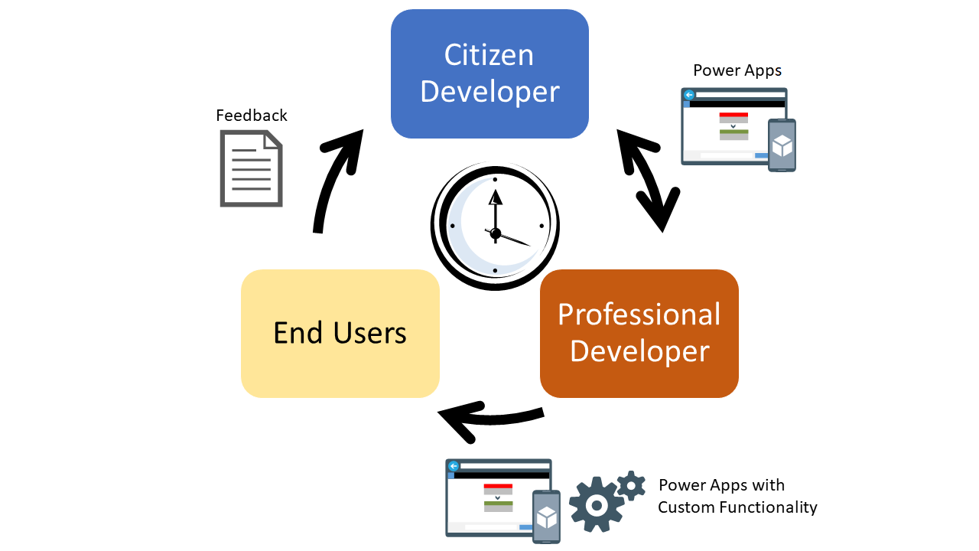Describe the business value of the Power Platform
Many organizations struggle with building solutions that help their users be successful. Not only do they struggle trying to modernize their systems, but they simply don't have the resources required to meet the ever-changing needs of businesses today. With demands for targeted applications at an all-time high and labor shortages, it isn't uncommon to see application demand up to five times what departments can realistically deliver.
This demand for applications and resources isn't the only challenge facing enterprises today. As the business climate changes, new factors are impacting businesses.
These impacts include:
Changing workforce expectations: As millennials and Gen Z come to represent most of the workforce, organizations need to adapt to fit the way they work. They grew up in a world of tailored experiences and collaborating through social media. To best apply their abilities, organizations need to be able to deliver more custom, streamlined, and collaborative digital experiences.
Increased costs for custom application development: Building custom applications is time consuming and expensive. Not only do you need to factor in the costs to initially custom develop an application, but you need to factor in the costs to maintain it.
Need to become more agile: Historically, solutions can take months to build and roll out. Once deployed, it can take weeks to implement every minor change. We no longer have that luxury. Business strategies and needs change rapidly, so organizations need to be able to quickly build solutions based on those changing needs.
Need to scale development efficiently: To meet ever changing needs, organizations need to change how they develop solutions. By responsibly enabling citizen developers (power users) as part of development processes, we can create hybrid development teams that empower the entire organization to grow.
The Power Platform makes it easy for organizations to address all the challenges mentioned. The combination of low code tools, along with the ability to use enterprise level application development tools, provides a collaborative solution. Citizen developers and professional developers can work together to build targeted solutions, based on needs of the people who use these applications every day.
For example, technicians in the field might encounter scenarios in which they need a mechanical part to execute a job. Ideally if that part is in inventory, they can easily request the part so they can continue to work. However, many times, there's a bottleneck in this process. Often, the technicians would need to first submit a request. This delay means to wait for the person in charge of the inventory to respond, only to find out later that the part isn't in stock.
This delay could be easily solved by building a dedicated app using Power Apps. By being able to check inventory levels while onsite, technicians don't have to spend time waiting to determine if the part is available. Not only can they see the inventory, but they can also easily request any part as needed. Since the technicians best understand what they need to complete the job at hand, they can use their first-hand knowledge to build out a prototype of the application using Power Apps. Technicians can choose the best user interface and overall experience. This process is something that the developer traditionally starts. However, by providing the technicians with the ability to create a functional app, they can easily get started with a working concept. Once the prototype is built, professional developers can then fill in any potential gaps that go beyond the technician’s technical ability. The professional developers can create the APIs that do the real-time checking of the company’s inventory system. The APIs can be easily added to Power Apps and Power Automate. This collaborative approach to creating solutions is often referred to as fusion development, allowing organizations to use the best resources for the required task.
The image provides an example of the fusion development approach.

Using a low code/no code approach minimizes the amount of time that development resources spend working on items like screens, automations, and more. This efficiency frees them up to focus on the more advanced portions of the solution where their skills are more appropriately used. With over 900 prebuilt connectors, Power Platform helps to simplify integration with both internal and external systems. These connectors mean that organizations don't need to build custom integration solutions from the ground up, which can be costly to maintain.
In addition to cost benefits, the Power Platform helps to increase performance and efficiency. The flexibility of the platform lets you build applications and solutions that meet your business initiatives and goals. For example, a dedicated time management Power App could be quickly created to ensure that everyone is capturing their time on projects the same way. This means that the potential for data entry errors would be dramatically reduced. Integrated approvals that are built on Power Automate ensure that items are being automatically routed to the right person. Time off requests, for instance, can then be approved or rejected as quickly as possible.
Power Platform helps organizations build solutions that meet their ever-changing needs. Power Platform increases business agility by allowing organizations to quickly build applications in hours or days, as opposed to weeks or months. This speed of development ensures that by the time the solutions are created, it is still something that provides value. The business value typically extends improvement in multiple value drivers, such as performance improvement, direct/indirect cost savings, risk mitigation, and business transformation.
The speed of app development allows organizations to have a library of applications to facilitate day-to-day operations. These apps might include solutions for frontline worker scenarios like facilities management back-office administrative solutions like personnel management and employee onboarding, and many more.